Tag: Climate Change & Environment
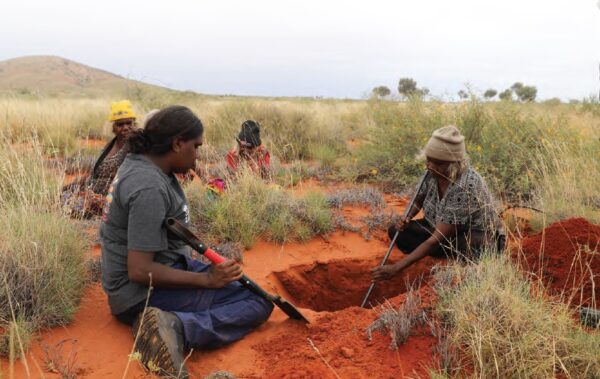
Anangu traditional owners are gathering at Ilpili, a significant water site between Walungurru (Kintore) and Papunya, to celebrate the new Central Western Desert Indigenous Protected Area on Wednesday, 12 March.
The IPA covers the Haasts Bluff Aboriginal Land Trust, some almost 40,000 square kilometres, and comes with additional resources allowing traditional owners and Central Land Council rangers to better care for country.
The IPA is the missing piece of the puzzle between the CLC-managed Southern Tanami, Northern Tanami, Angas Downs and Katiti Peterman IPAs, adding to a network of conservation areas larger than Victoria.
It forms part of a 435,000 square kilometre cross-border protected desert area that also includes neighbouring Uluru-Kata Tjuta and Watarrka national parks.
The IPA features rich cultural landscapes that are home to rare and endangered native plants and animals.
Over the past two decades, nine threatened species have been found here, including the critically endangered central rock rat that survives in the ranges around Papunya.
“The Central Western Desert IPA is not just about conservation,” CLC chief executive Les Turner said.
“It is also about empowering traditional owners to drive the development of the region by creating good jobs on country.”
The IPA’s traditional owners are looking forward to protecting it against feral camels, buffel grass, wildfires and other threats with the help of federal government funding.
The CLC’s Anangu Luritjiku and Walungurru ranger groups will manage this land under the guidance of the traditional owners, following a detailed IPA management plan.
“This IPA gives us our own voice and brings all the communities together in managing our land,” Anangu Luritjiku ranger group coordinator Lynda Lechleitner said.
“It’s also going to make it faster to deliver our work on the ground because we are all working towards the same plan.”
The rangers of tomorrow will be front and centre of the community celebration at Ilpili, 400 kilometres west of Alice Springs.
Children from schools across the land trust will join the adults for purlapa (ceremonial dancing), billy can races, spear throwing, sand painting, water testing and animal tracking.
The Australian Government’s $231.5 million IPA program supports this project.
IPAs are established under agreements between First Nations peoples and the Australian Government to manage and protect areas of land and sea for biodiversity conservation.
They make up more than 13 per cent of Australia’s landmass and more than half of the national reserve system.
The government has set a target to protect and conserve 30 per cent of Australia’s land and oceans by 2030.
The Central Western Desert IPA adds nearly four million hectares to help reach this target – more than 24 per cent of Australia’s landmass is now protected.
MEDIA CONTACT: Sophia Willcocks | 0488 984 885 | sophia.willcocks@clc.org.au
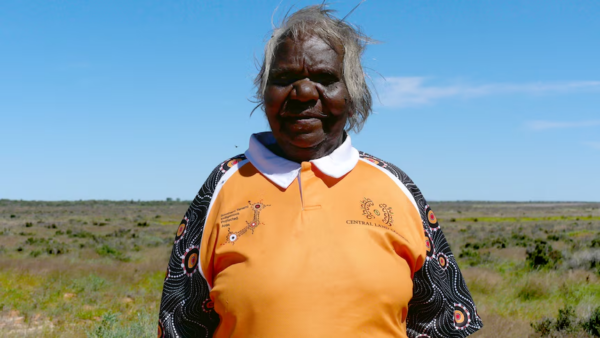
Warlpiri woman Alice Henwood is an expert tracker from Nyirripi.(ABC Alice Springs: Victoria Ellis)
“Nyiya Nyampuju?” What is this?
The call rings out across the red clay and sand.
The voice belongs to Warlpiri woman Alice Henwood from Nyirripi, a small community about 400 kilometres north-west of Alice Springs.
“Nyiya Nyampuju?” she asks again.
The group of people, spread out like the tufts of spinifex across the land, slowly gather around to look at where she is pointing.
They are quiet.
Alice knows the answer to her question, but right now she is teaching.
Finally, someone speaks up.
“Wardilyka,” Bush turkey, he guesses correctly.
The questions continue.
“Ngana-kurlangu?” Whose is it? “Nyarrpara-purda?” Which direction?
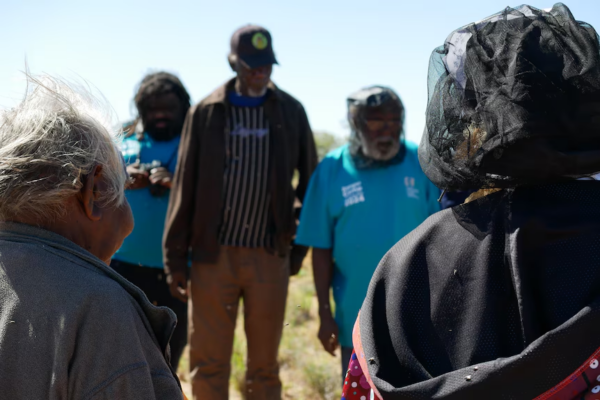
A group of people are tested on their tracking knowledge.(ABC Alice Springs: Victoria Ellis)
Over and over she asks the group with each new set of tracks that are found.
There are many of the puluku, cow.
There’s also the ngaya, cat, the puwujuma, fox, the warnapari, dingo and excitingly, the endangered walpajirri, bilby.
Full story here: Warlpiri preserve language, culture through animal tracking program for next generation – ABC News
The Central Land Council wants the Northern Territory government to take the overdue step of declaring the main fuel of the bushfires burning all around Alice Springs a weed.
As large surrounding fires blanket the town in smoke for the second week in a row the council has called for a weed declaration to assist with the management of the invasive and highly flammable buffel grass that is fanning the flames.
A resolution outlining the council’s appeal has been sent to the NT environment minister and a working group advising her on the management of the grass.
“The resolution shows how strongly our elected members feel about the extremely destructive cultural, health and environmental impacts of this introduced species,” CLC general manager Josie Douglas said.
“On some days last week the air quality in Alice Springs was on par with some of the most polluted cities in the world.”
With an area five times the size of Tasmania already destroyed and more than 80 per cent of the Territory predicted to burn this season, residents of remote towns and communities have months of smoke and fires ahead of them.
“Buffel is not just a danger to our health, homes and critical infrastructure, but threatens our sacred sites and is one of the main drivers of native species extinctions in Central Australia.
“Because it burns much hotter than native grasses it pushes our native plants and the animals that depend on them to the brink,” said Dr Douglas.
The CLC wants the NT government to follow the lead of South Australia, where the grass is already being managed as a weed.
“A weed declaration would be a catalyst for action and help to attract resources for buffel grass control,” said Dr Douglas.
“We stand ready to develop a weed management plan with government agencies and the traditional owners we represent and to better protect country that is still intact.”
Dr Douglas said investment in research and development, such as biological controls of the weed, is a matter of urgency.
The CLC is a member of the NT government’s buffel grass technical working group and part of a broad chorus of voices urging that the weed declaration apply to all land tenures across the Territory.
Contact: Sophia Willcocks | 0488 984 885| media@clc.org.au
The twice-rejected Western Davenport water allocation plan unmasks the Northern Territory government’s disregard for Aboriginal rights and sites and lacks social licence, Central Land Council chief executive Les Turner said.
He said the plan follows pretend-consultations with traditional owners, disrespects their concerns about site protection, their rights and interests in water and is opposed by the government’s own water advisory committee for the region.
The so-called consultation process consisted of two misleading presentations by government water planners who spruiked out-of-date information. Traditional owners may as well have stayed away.
“That’s our country. We should be involved. What’s going to happen to our sacred trees?” said Alekarenge community leader Graham Beasley.
Mr Beasley said traditional owners “will get sick” if they can’t protect their water sites. “That’s our culture – we can’t give it away.
They have already taken everything. What more do they want?”
The NT’s latest water allocation plan ignores sacred site protection while the government pretends on the international stage to respect their cultural and ecological knowledge.
“Minister Lauren Moss’ address to the United Nations General Assembly last month was at odds with the government’s continued and complete contempt for Aboriginal cultural and environmental values when it comes to water planning,” Mr Turner said.
“The draft Western Davenport water allocation plan it has released for public comment offers no protection for our sites and the environment.”
“Traditional owners might as well have stayed away since the plan only pays lip service to the concerns they raised.
“The government has failed to seek their prior informed consent and share decision-making – principles it promised to uphold under the Closing the Gap reforms and in the international arena.”
Water advisory committees, such as the committee for the Western Davenport region north-east of Alice Springs, are the main avenue for the public to try to influence water governance in the NT.
The CLC, along with most of the committee members, rejected two earlier iterations of the plan, but continued to work with the government in good faith.
Committee members include Andrew Johnson, Paul Burke, Roy Chisholm, Annette D’Emden, Jade Kudrenko, Paul McLaughlin, Steve Morton, Barbara Shaw, Michael Liddle and Nicholas Ashburner.
The committee unanimously advised the government that its estimate of how much water can be sustainably extracted is too high.
Traditional owners fear the draft plan puts their sites, plants and animals at great risk.
One of the objectives of the old plan was to protect Aboriginal cultural values.
Under the new draft they merely need to be “considered” as one set of values amongst many others when issuing water licences.
“This is unacceptable because many sacred sites and practices in the region depend on groundwater and the ecosystems it sustains,” said Mr Turner.
“Any drop in the water table risks irreversible damage to sacred springs, soakages and trees. Our country and culture will be sacrificed if water extraction is not carefully managed and limited.”
“The plan has now been rejected for the second time and has no social license,” he said.
“The government has released it because its process of box-ticking has finally hit a brick wall.”
The water plan for the Western Davenport region also ignores land rights and sacred site protection laws.
Contact: Sophia Willcocks | 0488 984 885| media@clc.org.au
A federal plan to protect threatened species has neglected almost all of central Australia and will not stop extinctions, wildlife advocates say.
The 10-year Threatened Species Action Plan was released last month, highlighting 20 important natural places and 110 national species of concern to be prioritised for protection.
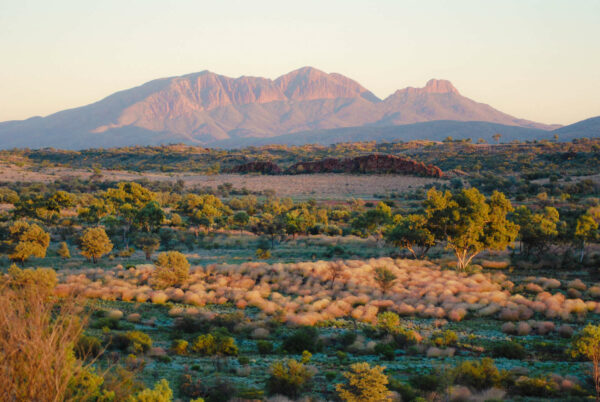
Central Australia’s only priority area
Through the Northern Territory’s Central Land Council, traditional owners co-manage the MacDonnell Ranges National Park, which is the only priority area in central Australia listed in the federal plan.
Eastern Arrente man and land council chief executive Les Turner said rangers were poorly funded and unable to adequately manage the millions of hectares they were responsible for.
View the full feature article online here.
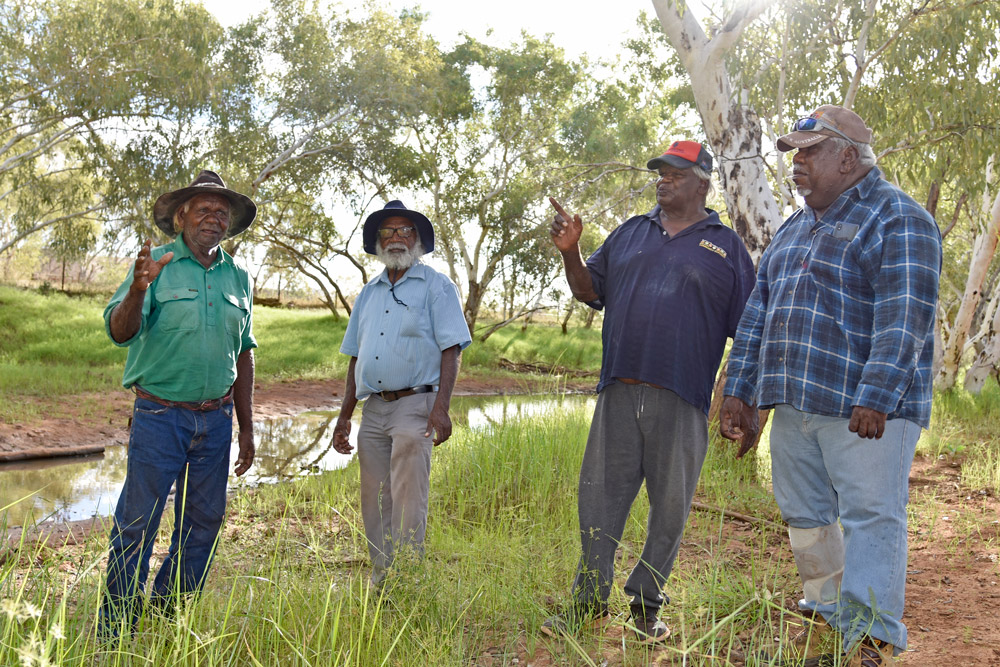
“Too precious to rush this”: NT Government’s water controller urged to delay huge horticulture water license decision until impacts are known
The Central Land Council has called on the Northern Territory’s water controller not to approve a 40,000 megalitre-a-year water license application for Singleton Station, south of Tennant Creek, until more is known about the impacts of the proposal on more than 1000 affected residents.
“We are very concerned about the lack of scientific data about groundwater availability and how such a massive and unprecedented proposal would affect the water our people, animals and plants are relying on for their long-term survival,” said CLC executive member Michael Liddle.
Fortune Agribusiness last year applied for 40,000 megalitres of publicly owned water to be set aside each year for 30 years, for free.
This is more than eight times the amount of water Alice Springs uses in a year and would become the biggest groundwater licence in the history of the Territory.
“It would be extraordinary if the government made such a far reaching decision based on assumptions and guesswork,” said CLC chief executive Joe Martin-Jard.
“There are big gaps in our knowledge about the region’s groundwater and how it moves between the network of aquifers.”
“We’re mining a very precious, finite resource that is likely to dwindle even further due to climate change and more frequent droughts,” he said.
“That’s why we want the government to collect data to verify its assumptions and modelling about how much water is really underground and test the impact of irrigation on groundwater dependent ecosystems and cultural sites before allowing this proposal to go ahead.”
The CLC is also concerned that the controversial application, if granted, will set a dangerous precedent that may jeopardise proposed small and sustainable Aboriginal-controlled water horticulture projects in the region.
Its constituents want to know a lot more about the potential impacts of the proposal, including on their drinking water, before a careful and evidence-based decision on the application is made.
In November, following a community meeting in Alekarenge, the CLC asked Water Minister Eva Lawler to delay a decision until after the ceremony season to allow a meeting of affected remote community residents, traditional owners and native title holders to go ahead in Tennant Creek on 24 February.
However, it has learned the water controller plans to make a decision about the allocation next week.
Any allocation could be followed by what the government calls ‘adaptive management’, where the allocation would be varied over time, in line with how much water will be found to be actually available.
“Does anyone really believe that if their guesswork turns out to be wrong they will ask the company to pull out fruit trees and irrigation lines later on?” Mr Liddle asked.
“No future government will have the political will to cut back the water allocations of companies that have already invested millions of dollars.
“Our water is too precious to rush this or get it wrong. Our communities deserve to know the facts before a decision is made.”
Download the CLC Fact Sheet on the Singleton Station water allocation decision.
More than 50 business, Indigenous, health and community organisations have come together urging parties to commit to legislate for climate action ahead of the Northern Territory election.
They will deliver an open letter to party leaders today that calls for a Climate Change Act setting a legally binding pathway for the Territory to meet the Paris Agreement target of net zero emissions by 2050.
The act would compel future NT governments to consider climate risks in all portfolios and make decisions in the best interests of current and future generations of Territorians.
The NT faces some of the most extreme impacts from climate change, yet lags behind other jurisdictions that are already implementing a clean energy future.
Victoria, South Australia and Tasmania all have laws to reduce greenhouse gas emissions, as do countries such as New Zealand, the UK, Mexico, and many states in the US and Europe.
“The Territory finally has bipartisan support for reaching net zero emissions by 2050, but unless that becomes law, we can’t be confident that the target will be reached,” says Shar Molloy, Director of the environment Centre NT.
“The NT’s recent climate change response is a strong policy foundation, but we have seen good policy thrown out before when governments change. A Climate Change Act will make sure future governments are held accountable for protecting our futures.”
Unprecedented heat waves, reduced rainfall, species loss and ecosystem damage are already threatening NT lives and livelihoods.
Climate change is threatening the very survival of Aboriginal communities because its impacts compounds inequalities in housing, health, food and energy security.
“Our people are on the frontline of climate change,” said Central Land Council executive member Michael Liddle. “Our overcrowded hotbox houses are becoming less habitable every year and a falling water table and reduced rainfall are threatening our drinking water and the plants and animals we depend on.
A climate change law would help us to fight those risks and make a faster transition to affordable, clean energy that creates jobs in our communities.”
The open letter calls for Aboriginal knowledge to inform the Territory’s climate change response and for Aboriginal representation in an independent expert NT Climate Advisory Council overseeing the delivery of a Climate Change Act.
“We have a lot to contribute because we have cared sustainably for country for tens of thousands of years and we want and need to be part of the solution,” said Mr Liddle.“We need to educate ourselves about the causes of climate change, how it impacts on the bush foods that are becoming harder and harder to gather and how that in turn affects our cultures and identities.”
As the Territory moves into another hot summer, the need to prepare the community for a heating world is increasingly urgent.
“The rise in extreme heat days is already making more and more people sick and killing them, and if we don’t take action we’ll see even more heat-related deaths,” says doctor and ANU Senior Lecturer Simon Quilty.
“Strong climate legislation would help us create more liveable and resilient communities, for example by investing in environmental health – shade, green spaces and cool spots in our urban spaces and remote communities.”
A Climate Change Act will send a clear signal to industry and investors that the NT will recover from this pandemic by creating jobs in industries that are good for jobs, the environment and regional economies.
It is also an opportunity to make sure the response to climate change is fair and equitable.
“Responding to the challenges of climate change is a chance to make the Territory a better and more equal place for everyone. We can tackle disadvantage at the same time as providing climate solutions – byinvesting in social housing, cleaner, clean affordable energy, and supporting local jobs in sustainable industries,” says John Adams, Jesuit Social Services General Manager NT.
“As we’ve seen with COVID-19, we know that climate change will hit some groups in our community harder than others – because of their income, where they live, where they work, age or disability. Working withthe community sector will be critical to ensure needs of the most vulnerable groups are prioritised.”
Community members can support the call for a Climate Change Act by signing the petition launched today by the Environment Centre NT:
https://www.ecnt.org.au/2020_climatechangeact_petition
Media Enquiries – Kate Davies, 0419 723 196 or kate@climatemediacentre.org.au
The four Northern Territory land councils condemn the unacceptable lack of protection for safe and adequate drinking water in the NT.
Meeting in Darwin with NT Chief Minister Michael Gunner and opposition party leaders, the land councils called for urgent legislation to ensure that all Territorians have access to safe drinking water.
The land councils want all parties to commit to enacting a Safe Drinking Water Act that provides regulatory protection and accountability for the safe and adequate water for all.
Communities throughout the NT – from the north to the south – are experiencing poor water quality and water stresses, for example Kintore, Yuendumu, Willowra, Yuelamu, Ntaria (Hermannsburg), Imanpa, Mutitjulu, Willora, Wutunugurra, Alekarange, Utopia, Alpurrurulam, Warruwi, Bulla, Numbulwar, Ngukurr, Milingimbi, Wurrumiyanga and Laramba.
Central Land Council chief executive Joe Martin-Jard said residents of the Laramba community, three hours northwest of Alice Springs, are drinking water that contains three times the level of uranium than is recommended as safe by the World Health Organisation.
“The lack of legislative protection out bush is discriminatory and constitutes negligence by the Northern Territory Government,” he said.
“That’s why we want whoever forms the next NT government to bring in legally enforceable minimum standards for drinking water quality and security.”
“All Territorians, not just those living in major towns, have a right to safe and adequate drinking water,” Northern Land Council Chairman Samuel Bush-Blanasi said.
“Bush voters deserve to know how the parties are planning to ensure they can enjoy this right.”
The land councils say existing water legislation must also be amended to prioritise future drinking water reserves over all other uses.
“These legislative changes must be supported by an overarching water security strategy to protect our most precious resource,” Tiwi Land Council chief executive Andrew Tipungwuti said.
“Any party vying for the bush vote must commit to significantly increasing spending on repair, replacement and maintenance of ageing remote water infrastructure and installation of proven technological solutions to better use non-potable water.”
Anindilyakwa Land Council chair Tony Wurramarrba added that all funding decisions about water infrastructure and services must be transparent, and involve the land councils.
“Too many of our communities are running out of water or are forced to drink polluted water. We need to be involved in deciding on water infrastructure and services on Aboriginal land,” he said.
CLC: Elke Wiesmann / 0417 877 579 / media@clc.org.au
NLC: Leah McLennan/ 0427 031 382 media@nlc.org.au
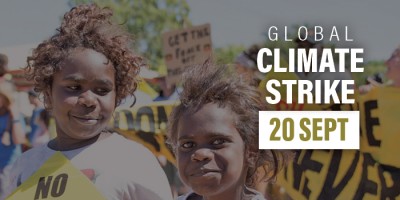
The Central Land Council has called climate strikers to think of remote community residents who are most at risk from the climate emergency.
“CLC members and workers will join striking students and their supporters from across the Northern Territory and I support their right to take this action,” CLC chair Sammy Wilson said.
“I call on them to spare a thought for Aboriginal people out bush who may not be able to travel to the strikes but who are already suffering most during our hotter, longer and drier summers,” Mr Wilson said.
“I am dreading another summer like the last one because it is especially tough on our old and sick people who live in overcrowded, poor quality houses.”
With many remote communities under severe water stress, water shortages and quality topped the list of policy priorities endorsed by the CLC’s elected delegates at their most recent council meeting in August.
The delegates want to live sustainably on their country and see water rights and liveable houses as central to their future and are prepared to fight for a safe environment.
“The government gave us the land back but not the water. Water is the new land rights,” Mr Wilson said.
Following the NT’s hottest summer on record, and the driest in almost three decades, the delegates also nominated climate change and water security as high policy priorities.
“Last summer many people were struggling to sleep. We heard about people taking turns in the coolest parts of the house,” Mr Wilson said.
“Most of our people live in concrete boxes and can’t afford to run air conditioners around the clock. Many don’t have working fridges to keep food safe for eating, so they are very likely to get sick.”
Mr Wilson said we must listen to scientists who are predicting that the poorest people in the hottest countries will be hardest hit by climate change.
“Aboriginal people want to be part of the solution. We want to have access to clean technologies such as solar power so that our children have the chance to keep living on our traditional country.”
MEDIA CONTACT: Marie Rançon | 0467 879 254 or 08 8951 6215| media@clc.org.au
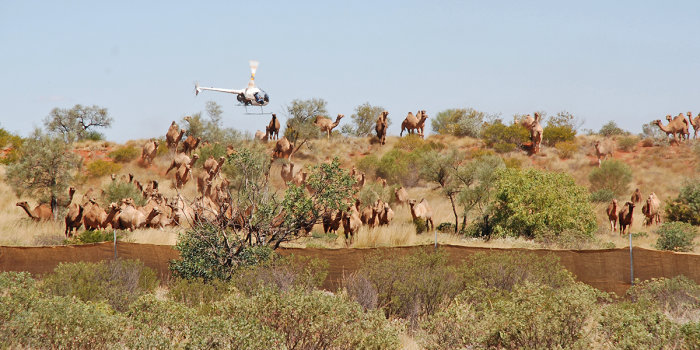
JOINT MEDIA RELEASE 10 DESERTS PROEJCT/CLC
The Central Land Council (CLC) recently completed feral camel control work in remote central Australia areas in conjunction with the 10 Deserts Project (the project).
Mr Peter Donohoe manager – land management, CLC said “Over 1000 camels and other feral animals were removed in an area covering over 27,000 sq kms area after consultation with traditional owners”.
“Being able to leverage funding for control work from the project has enabled the CLC to conduct feral camel management in the remote Katiti Petermann Indigenous Protected Area and Haasts Bluff area of central Australia”, Mr Donohoe stated.
“The Indigenous land owners have been proactive in wanting to manage this problem on their lands as it deeply impacts on their natural and cultural assets. We will continue to work collaboratively with the 10 Deserts Project and the Northern Territory government to continue this important control work”, he continued.
The project is working in collaboration with CLC, Indigenous project partners and key stakeholders to fund and implement control work. This work is complex and requires the consent of traditional owners and the cooperation of land managers, and the Northern Territory, South Australian and Western Australian governments.
Mr Peter See, general manager 10 Deserts Project said, “The 10 Deserts Project is committed to supporting Indigenous organisations that want to manage feral camels on their country and we have allocated nearly $2 million over the coming four years for control work”.
“On past experience feral camels do enormous damage to native flora and fauna, and cultural sites particularly waterholes. When conditions are harsh, they move into remote communities looking for water and do significant damage to infrastructure and houses”, he continued.
Feral camels roam across 3.3 million square kilometres of Australia’s rangeland. This incorporates a range of different land tenures including Aboriginal Lands, pastoral and mining leases, conservation lands and Crown Land.
With the consent of traditional owners, the project completed its first camel control work with the CLC. Although the number of feral camels culled was relatively low it is expected that this figure will increase in future control work.
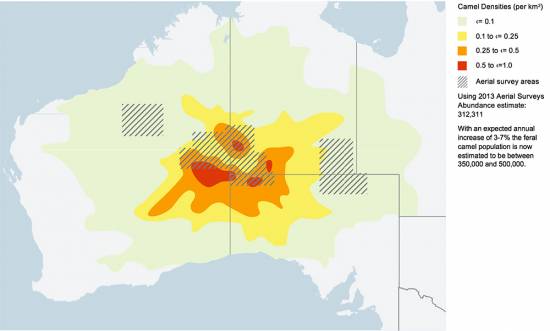
“Feral camels don’t worry about state or territory borders, fences or boundaries; the problem is truly a national issue. Because of the cross-jurisdictional nature of the issue the most effective way to deal with it is to collaborate. The aim is to remove as many feral camels from the landscape as quickly as possible”, Mr See said.
The 10 Deserts Project is led by Desert Support Services and aims to build the capacity of Indigenous groups to look after country for a range of economic, social, cultural and environmental outcomes.
For media enquiries:
10 Deserts Project: Shelley Doyle | M: 0477 222 117 | E: media@dss.org.au
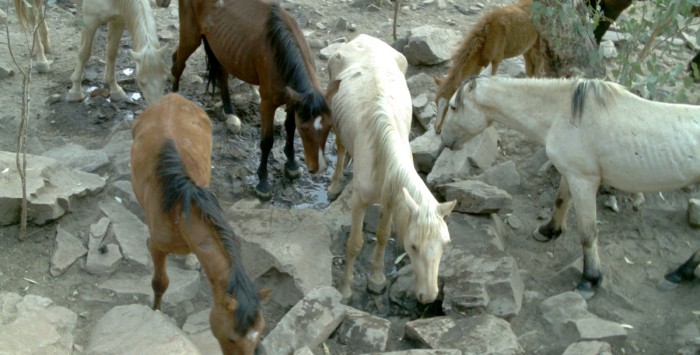
Traditional owners of four Aboriginal land trusts west of Alice Springs today gave consent to cull feral horses while a community meeting at Ltyentye Apurte (Santa Teresa) agreed how to safely dispose of horse carcasses.
At a meeting at Ntaria (Hermannsburg) traditional owners instructed the Central Land Council to organise an aerial cull to alleviate the suffering of other feral horses near the remote community.
The cull is scheduled to take place next week on the Ntaria [pronounced DA-rie], Rodna [pronounced ROD-nuh], Roulpmaulpma [pronounced ROULP-malp-muh] and Ltalaltuma [pronounced LA-la-too-muh] Aboriginal land trusts.
It will take place in a 3,182 square kilometre area and is expected to cost at least $19,000, with CLC staff providing ground support to the Parks and Wildlife Service.
Traditional owners were concerned about the feral horses’ poor condition and their impact on native animals, country and infrastructure.
They decided that the cull go ahead as soon as possible to minimise further suffering.
Meanwhile, a community meeting at Ltyentye Apurte this morning decided to move the bodies of horses that previously perished near a waterhole approximately 20 kilometres from the community to an area where they will not present a biohazard.
Last Friday, the CLC culled more than 50 feral horses after its Aboriginal ranger team found 90 dead and dying brumbies at the Apwerte Uyerreme [pronounced POUR-da YOU-rum] waterhole a day earlier.
The meeting participants, including residents, a local Aboriginal corporation and the MacDonnell Regional Council, agreed with traditional owners of the Santa Teresa Aboriginal Land Trust who want to “let the sun do its work” rather than to bury or burn the bodies.
They agreed to work together on a long-term management plan to attempt to avoid mass feral animal deaths in the future.
Last year the CLC sought additional resources to help traditional owners in the Ltyentye Apurte, Ntaria, Tennant Creek and Ti Tree regions to develop ‘Healthy Country’ management plans.
It expects the NT government to honour its commitment to contribute $200,000 towards these plans, which would be developed with the relevant traditional owners.
The plans would help Aboriginal rangers to manage feral animal numbers and enable traditional owners to muster and sell healthy animals.
More emergency culls are likely on Aboriginal land, following weeks of temperatures above 40 degrees Celsius.
Horses and other feral animals are dying of thirst and hunger because water sources are depleted and overpopulation has led to erosion and vegetation loss.
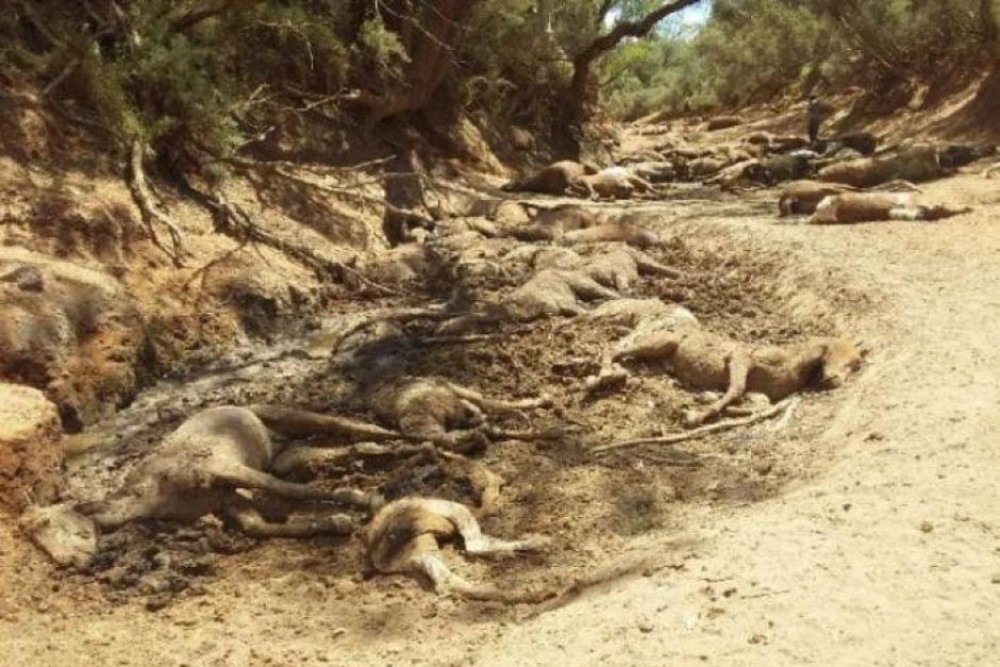
The Central Land Council last week culled more than 50 feral horses at Ltyentye Apurte (Santa Teresa) after its Aboriginal ranger team found 90 dead and dying brumbies at Apwerte Uyerreme [pronounced POUR-da YOU-rum] waterhole near the community.
It is also consulting with another remote community about an emergency cull.
Horses and other feral animals are dying of thirst and hunger because many reliable water sources, such as Apwerte Uyerreme, have dried up in the current heatwave and areas overpopulated by feral animals suffer erosion and vegetation loss.
As horse carcasses foul water holes that native animals depend on these, too, die.
The CLC and its constituents are very concerned about both feral and native animals in the current heat wave.
On Monday, CLC staff spoke with residents and traditional owners of another remote community where feral horses, donkeys and camels are dying of thirst.
Around 120 animals there are watering from a trough near the community and are in too poor a condition for mustering and transport.
The CLC received consent to undertake an aerial cull from those it consulted and scheduled an emergency cull for Friday, 25 January.
However, it has since learned that some residents are opposed to this.
It will therefore hold a community meeting today where government animal welfare officers will also be present.
“Before a cull it is important to get the informed consent of the traditional owners of the Aboriginal land trusts we support,” said CLC director David Ross.
“However in emergencies, such as last week in Ltyentye Apurte, we will go ahead without consent if necessary,” he said.
“With climate change well and truly upon us, we expect these emergencies to occur with increasing frequency and nobody is truly prepared and resourced to respond to them.”
Mr Ross said the CLC is helping traditional owners to prevent them by developing management plans with the four large Indigenous protected areas (IPAs) in its region.
“Aboriginal land trusts, unlike IPAs, lack the resources to develop such plans,” he said.
“That’s why we are pleased that the NT government has committed funds for us to develop ‘Healthy Country’ management plans over the next two years in areas across multiple land tenures, plans that include ranger groups operating in the Tennant Creek, Ti Tree, Ntaria (Hermannsburg) and Ltyentye Apurte regions.”
The plans will allow rangers and traditional owners to keep feral horse, donkey and camel numbers down and allow traditional owners to muster and sell healthy animals where they can find a market.
Next Wednesday, 30 January, the CLC will hold a meeting at Ltyentye Apurte to discuss last week’s cull, how to assist the Santa Teresa Aboriginal Land Trust to dispose of the carcasses and how to avoid mass animal deaths as the climate gets hotter.
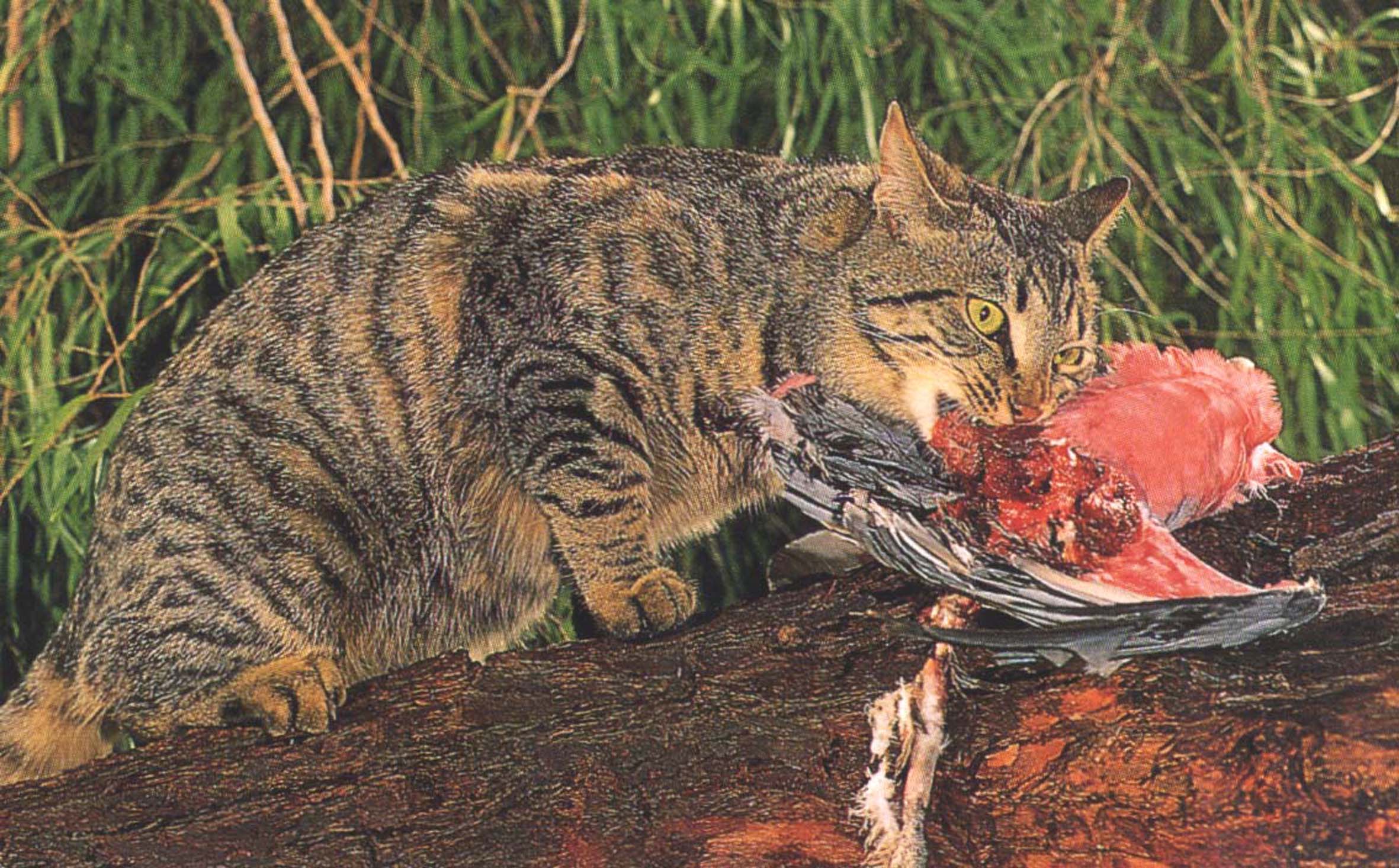
Bilby Blitz raises questions about threatened species’ main predator
Results from the first national Bilby Blitz are in and the news is mostly good.
Indigenous rangers found signs of bilbies where they expected them to be surviving and there appear to be reasonable numbers of them.
“This suggests there are healthy breeding populations in these last refuges, which are mostly on Aboriginal land,” said the manager of the Central Land Council’s land management section, Peter Donohoe.
The cross border blitz, around the Easter period, collected base line data about the last remaining bilby habitats.
“Indigenous rangers from 11 groups in the Northern Territory and Western Australia found bilby tracks, scats and burrows in 58 of the 249 areas they surveyed with the new tri-lingual Tracks app.”
“The app allowed the rangers to record it in a standardised way in two of their first languages, allowing the results to be compared with future surveys.”
The 249 two hectare areas, known as track plots, which were scoured by rangers for signs of the threatened marsupial, were in places where bilbies were expected to be found, where they had been recorded in the past, or where there was the greatest chance of finding them.
The rangers found signs of new bilby populations at Kiwirrkurra in WA and the northern Tanami in the NT.
The only area where the rangers didn’t find any bilby signs even though some had been sighted there recently, was east of Barrow Creek.
“The rangers found old burrows but no fresh evidence, so more surveys will be needed,” Mr Donohoe said.
They also recorded signs of the bilby’s main predators, cats and foxes.
The findings are raising questions about which feral animal poses a greater threat to bilbies.
“Rangers found cat signs in 111 of the 249 track plots, including where many signs of bilbies were also found,” Mr Donohoe said.
“This means that bilbies can survive living side by side with cats, but we don’t know how many cats is too many.”
Rangers found evidence of foxes in only 50 of the track plots, however, where there were foxes there were fewer or no signs of bilbies, particularly in areas without recent bilby records.
“We found more evidence of bilbies in the areas where there were cats,” he said.
“Perhaps that means that foxes have a greater impact on bilby numbers than cats and that a single fox is one too many.”
“We need to do more research about the dynamics of feral hunters, their relation with the dingo, and their combined impacts on the bilby.”
The base line data from the surveys will inform the Commonwealth’s soon-to-be released bilby recovery plan.
“It’s the first time a Commonwealth threatened species recovery plan has been developed with the assistance of an Aboriginal subcommittee and rangers on that committee have had substantial input,” Mr Donohoe said.
He said the Bilby Blitz data will help land managers and ecologists to detect local changes in biodiversity, as well as monitor broader impacts of feral species and climate change across Australia’s desert regions.
“They will also help our rangers to better manage the country for bilbies through the use of fire and the control of feral animals,” he said.
Additional surveys the rangers carried out since the Bilby Blitz have already borne fruit.
“Recently they captured a male bilby on a sensor camera north of Tennant Creek,” Mr Donohoe said.
“There were also signs of what rangers believe were two females. That’s excellent news.”
The rangers recorded these latest sightings on the Tracks app in Warumungu.
The app, which was designed by the CLC and the CSIRO, has also been translated into Warlpiri.
It is part of a comprehensive threatened species data collection, storage and management system linked to the CSIRO’s Atlas of Living Australia.
As the last bilby refuges today are on Aboriginal land between Central Australia and the Indian Ocean, Aboriginal ranger groups are vital for the survival of the species.
The federal government funded the Bilby Blitz through the Indigenous Desert Alliance.
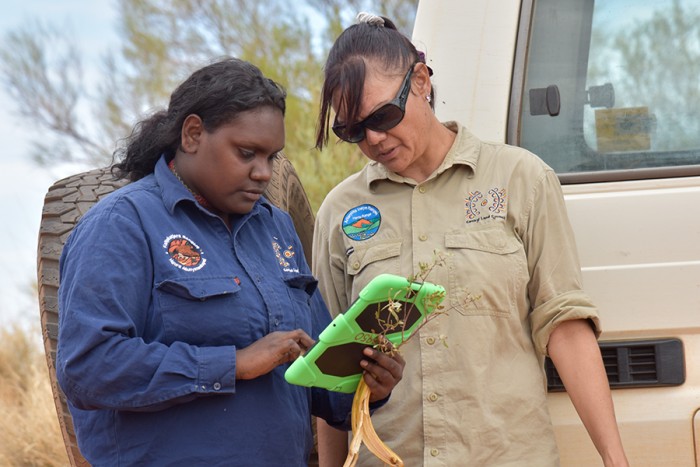
This Easter Aboriginal rangers will fan out across millions of hectares between the deserts of Central Australia and the Indian Ocean for the first cross border surveys of the endangered Greater Bilby (Macrotis lagotis)
Twenty ranger groups from the Northern Territory and Western Australia are combining their local knowledge and tracking skills with digital technology to conduct hundreds of base line bilby surveys by recording tracks, scats, diggings and burrows on Aboriginal land during March and April.
The data will update and expand our existing knowledge about the bilby’s distribution and inform the national bilby recovery plan – the first national threatened species plan developed with significant input from Aboriginal land managers.
Tomorrow at 10 am the Central Land Council rangers and other staff will join Australia’s Threatened Species Commissioner Dr. Sally Box at Hamilton Downs near Alice Springs to launch the Bilby Blitz at their annual ranger camp.
“A century ago bilbies roamed across most of Australia,” said ranger co-ordinator Josie Grant from the Central Land Council.
“Feral cats, foxes, cattle, donkeys, rabbits, camels and changed fire regimes have pushed bilbies to the edge of extinction. Today their last refuge is the land we manage and we’re really their last hope.
We’re protecting them through cool season burning and eradicating feral animals and weeds but because we’re all looking after huge areas of country we need a better handle on where our efforts will make the greatest difference.”
Ms Grant is on the indigenous subcommittee of the Commonwealth’s bilby recovery team, the first such indigenous advisory committee at a national level.
The rangers’ main weapon in the Bilby Blitz is the bilingual Tracks app, a mobile threatened species app in English and Warlpiri developed by the CLC as part of a comprehensive data collection, storage and management system linked to the CSIRO’s Atlas of Living Australia.
“Our Warlpiri rangers love the app,” said Ms Grant who grew up in the Tennant Creek region and speaks Warlmanpa and Warrumungu.
“The rest of us use the English version and can’t wait until we can afford to develop it in our first languages as well.”
The app, which can be downloaded from the Google Play store, collects the rangers’ tracking data in a standardised way, allowing the results to be analysed across time and sites and to be compared with future surveys.
This will enable land managers and conservationists to detect local changes in biodiversity, as well as monitor broader impacts of feral species and climate change across Australia’s desert regions.
“The Bilby Blitz is a ground breaking threatened species program for a culturally significant animal, a two-way ecological case study that demonstrates the critical role Aboriginal people play in protecting our country,” said CLC director David Ross.
“Seeing the Commonwealth develop the bilby recovery plan with Aboriginal land managers in the driver’s seat gives us real hope that there’s the political will to also resource and implement this plan,” Mr Ross said.
“However, our rangers will not wait to find out but get on with their vital conservation work regardless.”
The CLC is hosting the Bilby Blitz on behalf of the Indigenous Desert Alliance, with one-off funding from the federal environment department.
Its 12 ranger teams will be joined by rangers from the Kimberley Land Council, Kanyirninpa Jukurpa, Central Desert Native Title Services, the Ngaanyatjarra Council and other land management groups.
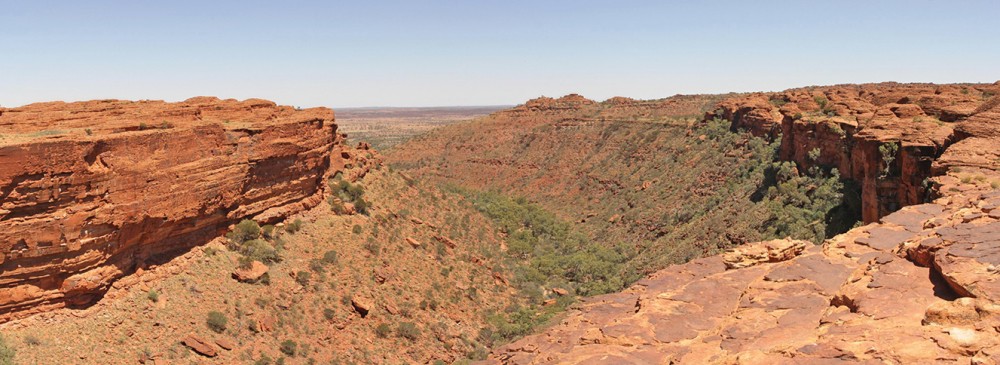
The traditional owners of the iconic Watarrka (Kings Canyon) National Park are overjoyed that their country is now officially off limits for mining and fracking.
As they found out at a meeting with the Central Land Council in the jointly managed park today, the NT government has declared a mineral and petroleum reserve over the entire park.
The declaration under the Petroleum Act reserves the park from the grant of an exploration permit or license.
“The reserves will provide significant levels of protection to the park that will exclude any future mineral or energy exploration and extraction,” the Department of Mines and Energy wrote to the Environmental Defenders Office in a letter dated 30 May.
The EDO had helped the traditional owners to take their campaign against mining in the park to Canberra in November 2015, where they applied for emergency protection under federal heritage laws after previous Territory governments ignored their appeals for years.
CLC Director David Ross congratulated the custodians on their victory.
“It just goes to show what can be achieved with a persistent, patient and united campaign,” Mr Ross said.
“The CLC told the Martin government 15 years ago that traditional owners were opposed to mining on their land.
It’s great to see that the Gunner government is fair dinkum about correcting the mistakes of the past.”
In 2012 traditional owners of the Watarrka Park Land Trust were notified of a proposed grant of two Exploration Permit Applications over the entire park.
They unanimously opposed the grant of those applications and sought to protect the park from any future mining or oil and gas activities, whether exploration or production.
The CLC and the EDO opposed the applications and campaigned for secure ongoing protection of Watarrka.
While this pressure swayed the Giles government to refuse the grant of the EPAs it ignored the custodians’ requests for ongoing protection.
The park continues to be subject to an application for protection under the federal Aboriginal and Torres Strait Islander Heritage Protection Act and is being assessed for National Heritage Listing.
The success of the Karlantijpa North Kurrawarra Nyura Mala Aboriginal Corporation at the fourth Emissions Reduction Fund (ERF) auction will create seasonal jobs and help to mitigate climate change.
The new corporation of traditional owners of the Karlantijpa North Aboriginal Land Trust, near Elliott in the Northern Territory, has won a contract with the Commonwealth’s clean energy regulator to earn carbon credits in exchange for strategic burning of savannah country.
The Central Land Council is helping the custodians to develop their carbon business, the first such Aboriginal enterprise in its region, and to carry out financially sustainable fire management that meets safety, cultural and environmental needs.
“This early win is so encouraging for this emerging enterprise,” said CLC director David Ross.
“It allows Aboriginal people to burn their country in a controlled manner early in the dry season in order to reduce massive amounts of greenhouse gasses that large and dangerous wildfires later in the year would otherwise cause.”
This abatement is measured and sold to the Commonwealth who uses it to meet its international emissions reduction commitments.
“The corporation will be able to claim its dry season burn from April this year and expects to earn its first carbon credits next July,” Mr Ross said.
The carbon credits will pay for annual fire management of a 3000 square kilometre portion of the land trust, including seasonal employment of locals.
“When burning starts again, next dry season, a dozen Aboriginal people will be hired to work with our rangers from Daguragu and Tennant Creek, but the benefits don’t stop there,” he said.
“If our successful ranger program is any guide, there will be wider social and environmental outcomes, such as improved biodiversity and reinvigorated cultural traditions.
More sustained employment outcomes would be possible if the Commonwealth funded a ranger group at Elliott or Marlinja.”
The CLC has visited the area with the traditional owners for the past three years to burn country, carry out biological surveys, monitor weeds and visit significant sites.
Before it started to work with traditional owners the rarely visited remote area experienced frequent out-of-control bushfires late in the dry season that also affected neighbouring pastoral properties.
The CLC rangers will help the corporation to carry out burning activities on a cost recovery basis for the next five years. Other CLC staff will co-ordinate the project on behalf of the corporation while building its governance capacity.
The traditional owners jumped at the chance to set up a business when a new methodology for savannah burning made the northernmost area of their land trust eligible to bid at the ERF auction.
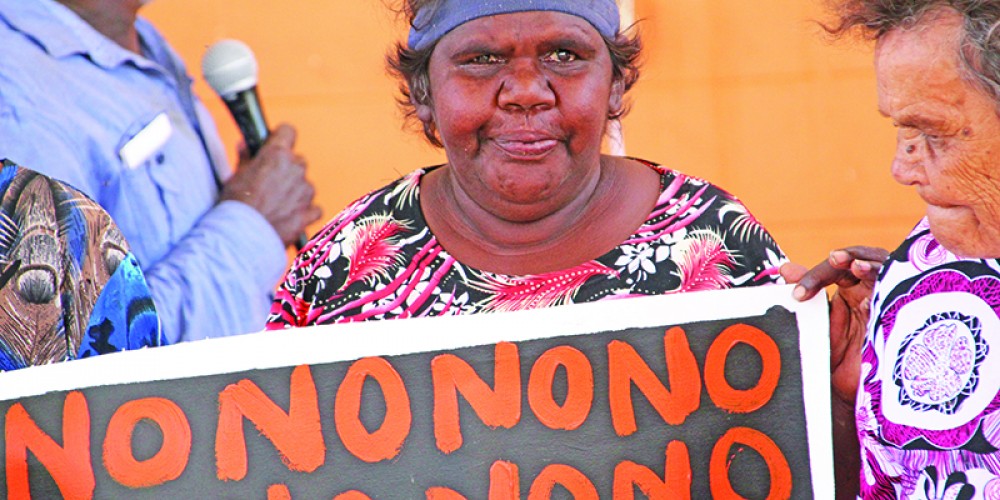
Central Land Council chair Francis Kelly has congratulated the closest neighbours of the shortlisted site for a national nuclear waste storage facility near Alice Springs on their successful campaign opposing the proposal.
The residents of the remote communities of Oak Valley, Walkabout Bore, Titjikala and Santa Teresa are learning today that the Arid Gold Date Farm has been excluded from the federal government’s shortlist.
“They have worked hard to have their voices heard and are breathing a big sigh of relief,” said Mr Kelly.
“Earlier this year the CLC met with all three communities’ traditional owners, government representatives and conservation groups to make sure the residents had all the information they needed to make up their minds.
The communities decided to oppose the nuclear waste dump and we’ve supported them all the way.
My heart goes out to the Adnyamathanha traditional owners whose country is left in the race now.”
Mr Kelly expressed surprise that the federal government claims ‘broad levels of community support’ for the Barndioota site near Hawker in the Flinders Ranges.
The site which was nominated by a former Liberal Party politician is adjacent to the Yappala Indigenous Protected Area.
“What about the people who must look after that country?” he asked. “They have also spoken up strongly against a nuclear waste dump.
Nobody asked them before their country was nominated. They are in the same boat as our mob was and they must really be in shock today.”
Mr Kelly said the CLC has consistently advocated for a site selection process based on science and true community consent, not on politics.
